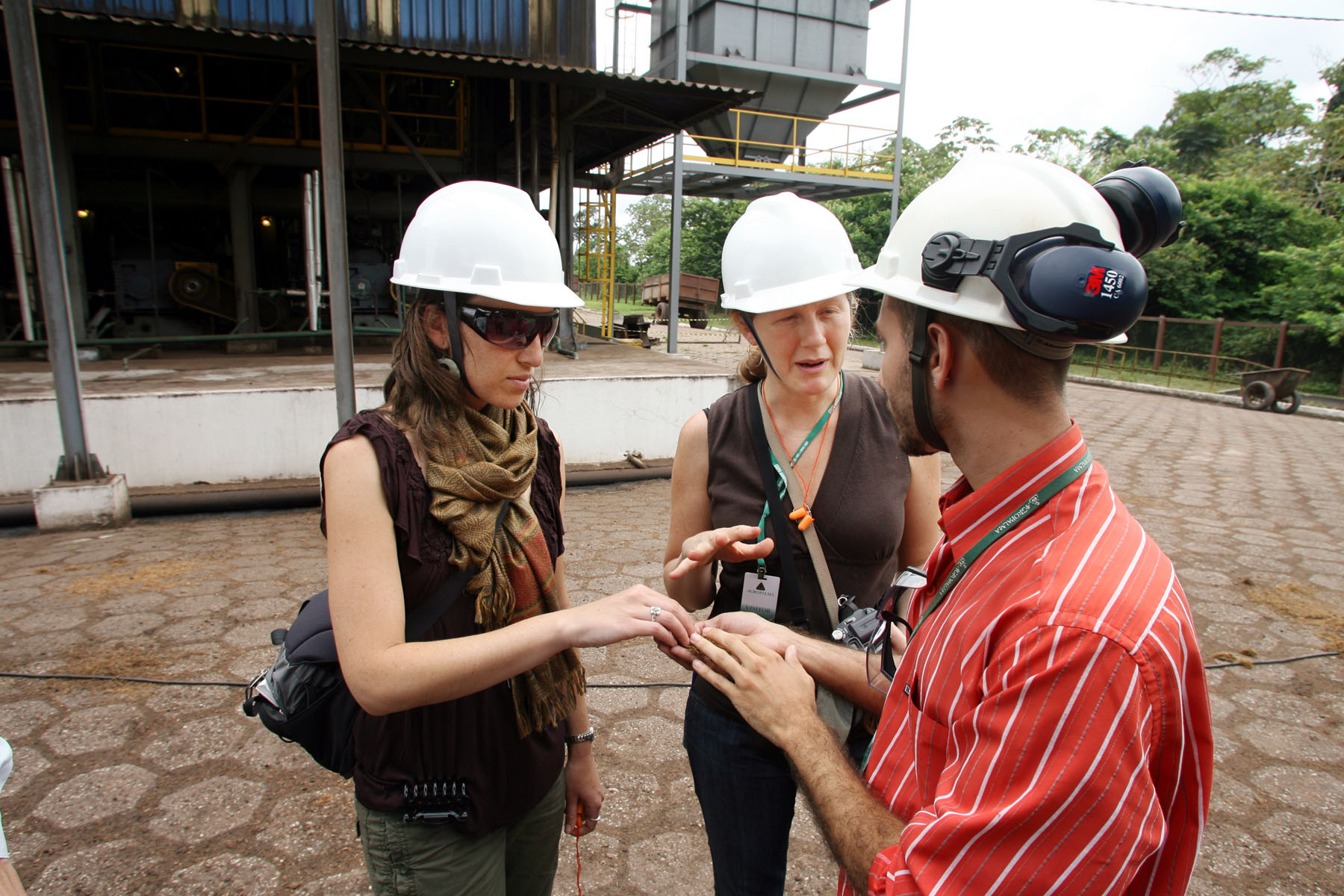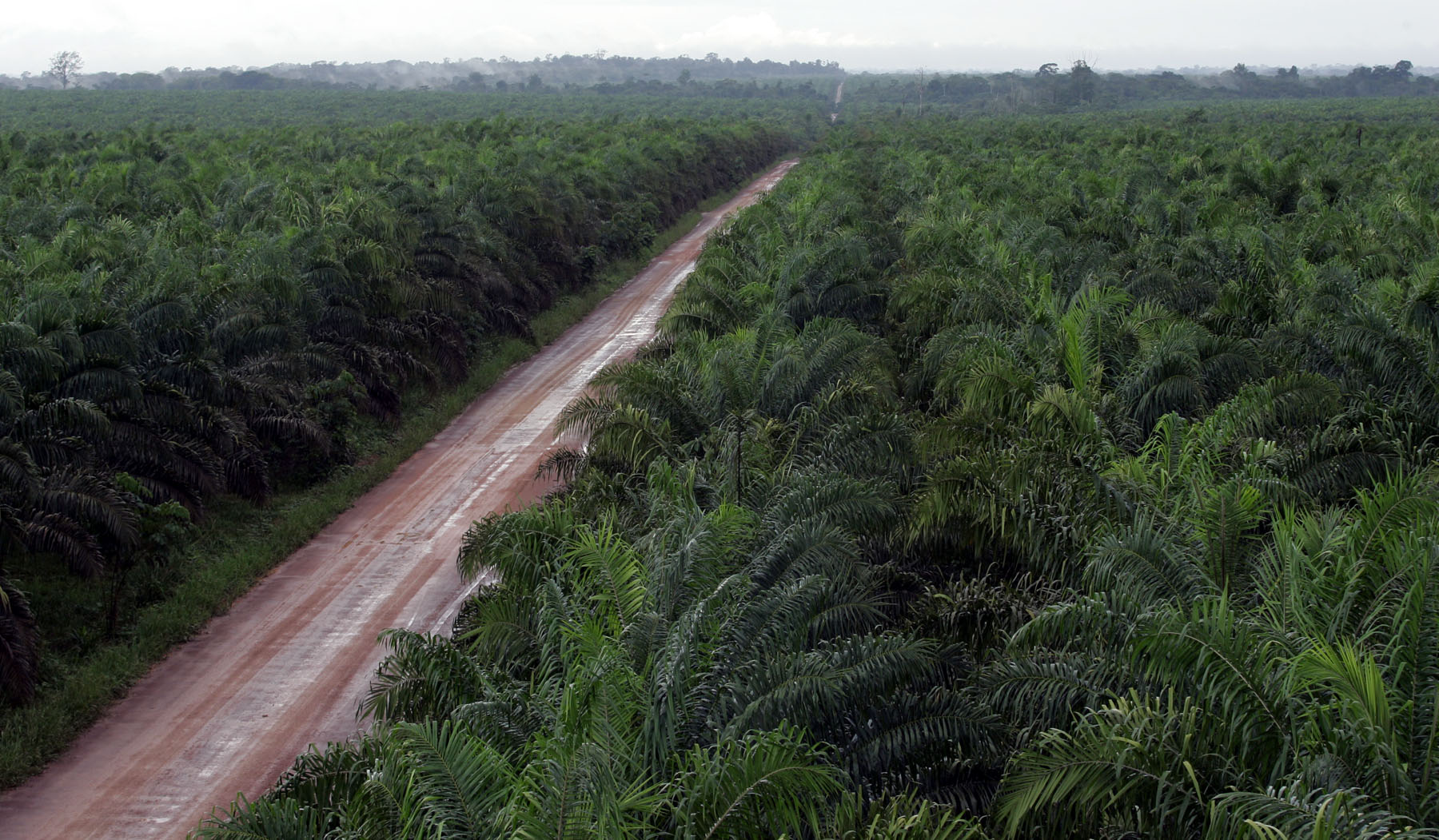Believe it or not, palm oil isn’t just being produced in Southeast Asia, the Pacific or in West Africa. Increasingly, massive palm oil plantations are sprouting up throughout Nicaragua, Costa Rica, Colombia, Ecuador, and Brazil—yes, in the middle of the Amazon.
I returned last night from a 24 hour visit to the Agropalma plantation. Their sprawling 107,000 hectare (264,402 acre) complex is located just three hours south of Belem, in the Brazilian Amazon. 40,000 hectares (98,842 acres) of this land is covered in palm oil plantations and the other 60,000 hectares (148,263 acres) of land remain in what Agropalma calls “forest reserves”. 1600 kilometers of roads run through the plantation—that’s 994 miles. Agropalma differentiates themselves from many other palm oil producers worldwide through their production of organically certified palm oil. 30% of their total palm oil in production is organically produced and certified. The rest is not.
Agropalma is a major producer of palm oil for all of Latin America, and one of the primary sources of organic certified palm oil to the U.S. and European markets. Their palm oil is destined for the food and cosmetic industry, but not for biofuels. In fact, if you shop at Whole Foods, and buy a 365 brand product that contains palm oil you have most certainly consumed Agropalma palm oil.
Ciranda, the company that supplies and markets the Agropalma oil to the U.S., has been in touch with RAN as a result of our work on palm oil and encouraged us to visit the plantation. My trip to Belem to attend the World Social Forum last week provided the perfect opportunity to take a field trip to Agropalma. Levana, from RAN’s grassroots organizing department, and photographer, Lou Dematteis, visited the plantation and on-site processing facility with me. 
Our visit to the plantation was an extremely well-orchestrated event, with one planned activity after another, involving traversing long distances in a car (sometimes 1 hour through pure palm oil) to our next destination, and when we arrived at various stops we were often greeted by 8 staff representing a specific department of Agropalma, i.e. phytosanitary control, organic production, environment department, etc. Everybody was super friendly, and willing to answer all of our many questions. By the end of the day, we had ingested much information, including taking a 3km walk through one of the forest reserves, which ended with a torrential downpour, as to be expected in the rainforest. Here’s some of what we were told:
- The owner of Agropalma was a recipient of the Brazilian government’s tax incentive program in the 1980’s which encouraged industry and individuals to relocate to the Amazon. The philosophy of the government was, “Occupy the Amazon in order not to lose it”
- Since 2002, Agropalma has only planted palm oil in cleared land—before then (since the early 1980’s) rainforest was cleared to make way for the plantation
- The Agropalma complex contains 3 residential villages for employees, has a total of 350 houses, houses 2500 people, has 4 “clubs”, 1 school, and 1 medical center
- Oil palm cutters and collectors get paid extra based on productivity, e.g. how many bunches they collect. Each cutter keeps track daily of each bunch that is picked, as does the onsite manager.
- The organic palm plantation is at the farthest north end of the complex and is separated by about 150 meters from the conventional plantation
- Agropalma’s organic certifications come from the Biodynamic Institute, BioSuisse, USDA, and JAS (Japan Agricultural Standard).
- The Acará river runs north/south through much of the plantation
- In 2004, in partnership with Sao Paulo University, Agropalma carried out research to assess and monitor the biodiversity of the forest patches near the plantations. More recently, Agropalma has partnered with Conservation International and they are doing some research on biodiversity in and around the plantation as well.
- For both conventional and organic palm oil production, pest management is done using biological and mechanical control. They use a variety of native predators, sugar traps, pheromones, and inoculation of bacteria or fungus to control pests. Pesticides are used in the conventional area when a major outbreak occurs.
Towards late afternoon, we were heading back to the main office. We still had a 45 minute drive through oil palm plantations ahead of us. As far as my eyes could see into the distant horizon, I saw a boundless green sea of palm trees. I kept thinking that there was something uncanny about the vastness and uniformity, almost Hollywood movie set about it. How could something be constructed in such a grand scale? 
We stopped at an old, wooden watchtower, decrepit and rotting, in the midst of the plantation so that we could get a bird’s eye view. We only made it up four stories before the structure indicated we could go no further. In the distance, we could see greenery that differentiated itself from the palm—indeed, some forest. Incredible to think that just 20 years ago, this plantation was rainforest. More incredible, perhaps, was that all we could see from that tower was only 2000 hectares of Agropalma palm oil. It went on forever, yet out of sight lay 38,000 hectares more that we couldn’t see from there.
I stood there and recalled a conversation I had earlier with a company employee. I asked why Agropalma operates in the Amazon region given the poor soil quality (Amazon soils are some of the worst agricultural soils on earth), and therefore the necessity to invest massively in fertilizers. After laughing intensely, he replied, “If there is one place that is the worst in the world to produce oil palm it is here in the Amazon.”
More than twenty years after the Brazilian government’s tax incentive program catalyzed a new wave of “occupation”, the trend continues. Several new palm oil plantations are being developed here (Agropalma considers them competitors), and soy continues to expand and threaten the Amazon at an alarming rate. Cattle ranching, mining, and oil exploration are all major threats as well. If we are to save the Amazon, perhaps it’s time to consider occupying something else, like the headquarters of the corporations and financiers responsible for damaging it.
*Photos by Lou Dematteis/Redux